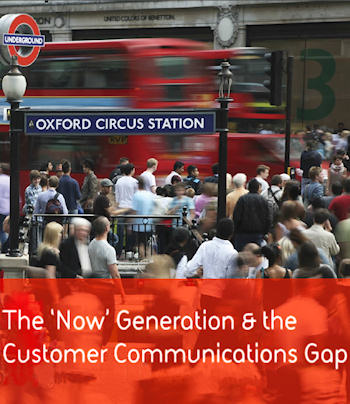Scoring Your Customer Experience Has Never Been More Important

With social networks constantly watching, customer satisfaction should be a prime concern, report claims
Customers are getting used to talking to their online vendors or partners through various media and expect some kind of near real-time social interaction. The issues this raises has formed the basis of report from Serco and VoiceSage, two companies with vested interests in customer service enablement.
The research forms the basis of a white paper, The ‘Now’ Generation & the Customer Communications Gap which shows that failing to reach a high standard of customer service is breeding impatience and intolerance in customers who are getting used to instant responses to their demands and enquiries.
Punt for CES
The paper agues that “punters” no longer expect to be treated as punters but as valued individuals whose needs and opinions really count. The report argues that rising customer expectations has promoted being “incredibly easy to do business with” above all other value-added activities and service differentiators when attracting new customers and engendering ongoing loyalty.
The “Now generation” in the title is often defined as under 30-year olds who have been brought up in an environment where internet access and social networking abound. But this would be a narrow definition when it comes to social engagement and e-commerce where the concept of a generation defined by age has blurred as technology adoption has increased and been embraced across the generation gaps.
Measuring success is a complex business and the white paper warns against an over-reliance on Net Promoter Scores and making wrong assumptions about what may have driven them. It argues that Customer Effort Scores (CES) can be a more accurate indicator by showing how much effort customers have to put into resolving issues and how underlying processes can be improved.
“All of the research is telling us that if companies fail to get the basics right – if they don’t allow consumers to get in touch in whatever way is convenient for them at the time, or get results quickly – they are in danger of losing those customers to a more responsive rival,” commented Owen Daly-Jones, managing director of service company Serco’s ExperienceLab.
He argued that many companies that have invested in improvements in contact centre performance often miss the point. “For example, recent studies have found that it isn’t how quickly a company answers the phone which determines customer satisfaction – but how quickly the customer service issue is resolved,” he said, adding that it is just one illustration of how companies have gone wrong by not looking at the broader picture.
Paul Sweeney, director of innovation at call centre specialist VoiceSage, claimed other research has shown that, on average, consumers use six different channels to interact with companies and the volume of contact is increasing.
“This is further adding to the pressure on companies which must now support multiple channels, and do so efficiently – yet still giving consumers the range of choices, and customer experience they expect,” he said.
The advent of social media has made customers realise they can get a prompt response if they contact a company publicly if they have a complaint to make.
“Brands have learnt they must react quickly in the interests of damage limitation, with an audience now watching to see how an issue is resolved. Ultimately customer satisfaction is determined by whether consumers’ needs are being met, and increasingly that means being able to get in touch and sort things out ‘right now’ – so that customers can quickly cross things off their list and get on with their busy lives,” Sweeney concluded.